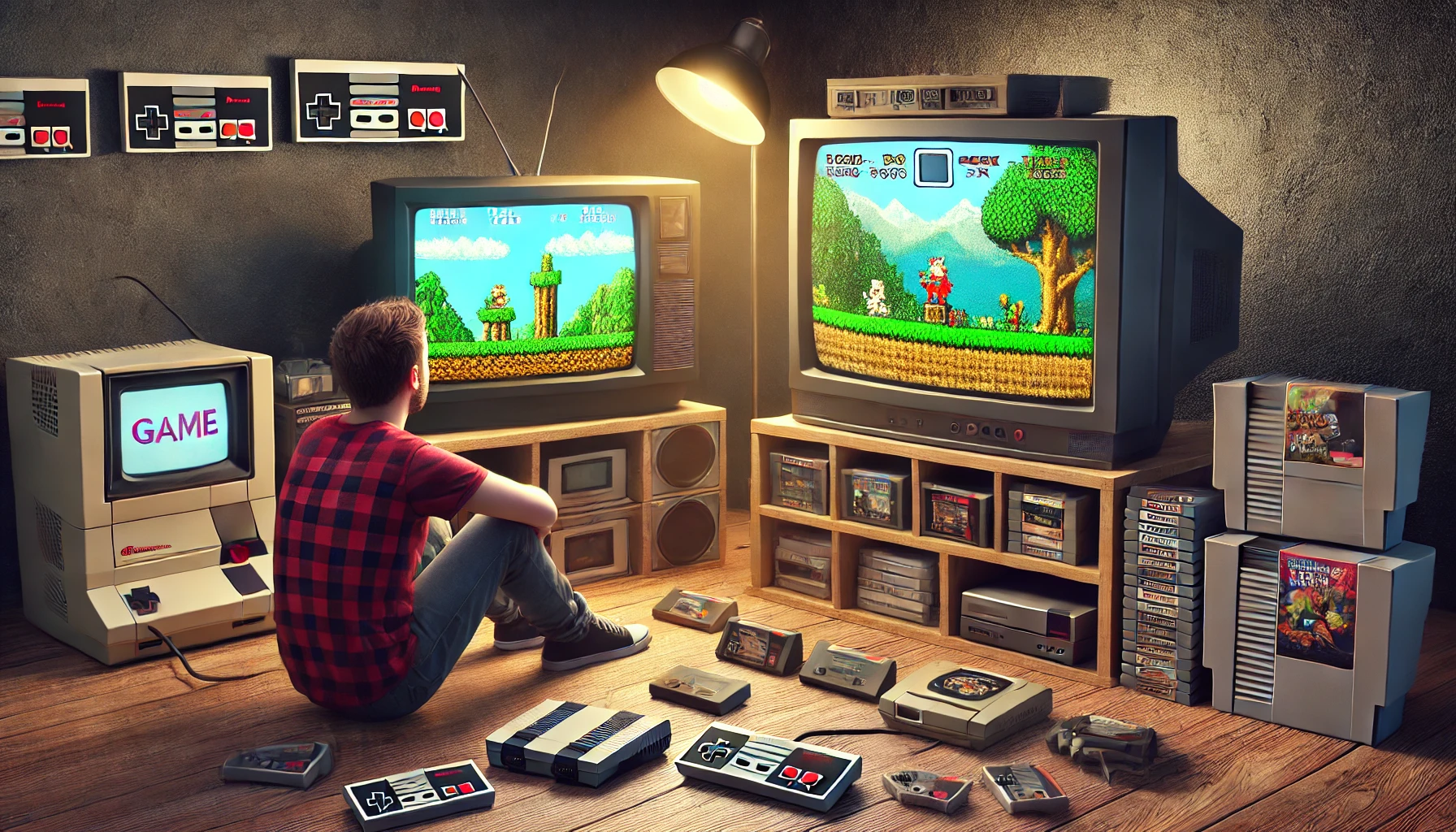Modern gaming has evolved into an industry worth billions of dollars, featuring cutting-edge graphics, open-world experiences, and complex storytelling. Yet, despite these advancements, many of today’s best games still borrow mechanics, aesthetics, and design philosophies from retro gaming. The foundation built by classic 8-bit and 16-bit games continues to shape the way developers approach game design, storytelling, and player engagement.
From side-scrolling platformers to pixel-art RPGs, difficulty curves to level design principles, retro gaming has left a lasting impact on modern titles. Whether it’s AAA studios implementing old-school mechanics or indie developers reviving entire genres, the influence of classic games remains undeniable.
1. Level Design: The Influence of Retro Games on Modern Worlds
One of the most important aspects of game design that originated from the NES and SNES era is how levels are structured. Back when hardware was limited, developers had to design levels efficiently, making sure they taught players mechanics naturally while keeping gameplay engaging.
A. Teaching Through Gameplay (Without Tutorials)
Older games rarely used tutorials—instead, they taught mechanics through gameplay itself. A perfect example is Super Mario Bros. (1985), where:
- Goomba forces players to learn jumping.
- Question block encourages players to explore and interact.
- Pit teaches players about falling hazards.
Many modern platformers, including Celeste (2018) and Shovel Knight (2014), follow this same philosophy, introducing mechanics naturally without excessive on-screen instructions.
B. Nonlinear Exploration and Metroidvania Influence
The Metroidvania genre (named after Metroid and Castlevania) has made a massive comeback in modern gaming, thanks to the open-ended exploration that started in the retro era.
- Super Metroid (1994) and Castlevania: Symphony of the Night (1997) set the standard for exploration-based gameplay with upgrades unlocking new areas.
- Modern games like Hollow Knight (2017) and Axiom Verge (2015) heavily borrow their world structure from these classics, offering vast, interconnected worlds with secrets and backtracking elements.
2. Difficulty and Game Design: Why Older Games Were Harder (and Why That’s Coming Back)
Many classic games were notoriously difficult, mainly because they were inspired by arcade design, where difficulty was used to extend playtime. Games like Ninja Gaiden (1988), Mega Man (1987), and Contra (1987) were tough, but they rewarded skill development and memorization.
A. The “Difficult But Fair” Design Philosophy
Modern games have brought back this philosophy. Titles like Dark Souls (2011) and Cuphead (2017) take inspiration from classic gaming difficulty but ensure that failure is a learning experience rather than frustration. They rely on:
- Enemy attack patterns that players must study and master.
- Checkpoints that encourage progress without making the game too easy.
- Punishment for mistakes but clear rules for improvement.
This is a direct evolution of the trial-and-error gameplay seen in older games, proving that challenge keeps players engaged.
3. The Revival of Pixel Art and Retro Aesthetics in Modern Games
While gaming hardware now allows for hyper-realistic graphics, many developers still intentionally choose pixel art and 16-bit style visuals. This isn’t just nostalgia—there are real design reasons for this choice.
A. Why Do Modern Developers Use Pixel Art?
- Timeless Aesthetic – Pixel art ages better than early 3D graphics, which can look outdated quickly.
- Lower Development Costs – Hand-drawn or pixel-based art is more manageable for small indie teams.
- Emphasizing Gameplay Over Graphics – Many indie games focus on gameplay depth over graphical fidelity.
B. Examples of Modern Games Inspired by Retro Art
- Stardew Valley (2016) – Inspired by Harvest Moon (1996), it recreates the pixel aesthetic while adding new mechanics.
- Undertale (2015) – Heavily influenced by EarthBound (1994), using quirky pixel art and turn-based RPG mechanics.
- Octopath Traveler (2018) – Introduces “HD-2D” pixel art, blending 3D environments with classic 16-bit character sprites.
These games prove that pixel art isn’t just a nostalgic choice—it’s a legitimate artistic style that enhances gameplay and storytelling.
4. Sound Design and Chiptune Music in Modern Games
The limitations of early gaming hardware forced composers to create iconic, memorable tunes using simple beeps and synthesized sounds. However, these constraints led to some of the most catchy and recognizable gaming soundtracks ever made.
A. The Legacy of Chiptune and Retro Music
Games like The Legend of Zelda (1986), Mega Man 2 (1988), and Castlevania (1986) proved that melodic composition mattered more than high-quality audio samples.
Many modern games use chiptune music or blend it with modern orchestration to keep that retro energy alive. Examples include:
- Shovel Knight (2014) – 8-bit inspired chiptune soundtrack composed by Jake Kaufman.
- Celeste (2018) – Uses a mix of chiptune and atmospheric soundscapes to match emotional moments.
- Hyper Light Drifter (2016) – Synth-driven ambient music reminiscent of classic Sega Genesis soundtracks.
Chiptune-style music remains popular in indie games because of its distinct identity and nostalgic appeal.
5. Indie Games and the Revival of Retro Mechanics
Many indie developers grew up playing NES, SNES, and Sega Genesis games, leading to a resurgence of retro-inspired mechanics in modern indie titles.
A. Indie Games Heavily Inspired by Retro Titles
- The Messenger (2018) – Inspired by Ninja Gaiden, featuring 8-bit to 16-bit graphical transitions.
- Blazing Chrome (2019) – A spiritual successor to Contra, bringing run-and-gun action with modern polish.
- Hades (2020) – Uses roguelike mechanics first seen in Rogue (1980), showing how old-school concepts still thrive today.
Indie studios embrace retro gaming influences because they offer engaging, time-tested mechanics that don’t require massive budgets to execute well.
Why Retro Gaming Will Always Influence Modern Games
Modern game design owes a huge debt to the innovations of retro gaming. Whether it’s level design philosophies, difficulty balance, pixel aesthetics, chiptune soundtracks, or tight gameplay mechanics, retro gaming laid the groundwork for today’s greatest games.
While technology will continue to evolve, the fundamentals of game design remain the same—and many of the best mechanics come from the golden age of gaming.
What’s your favorite modern game that feels inspired by retro classics? Drop a comment below and share your thoughts!
